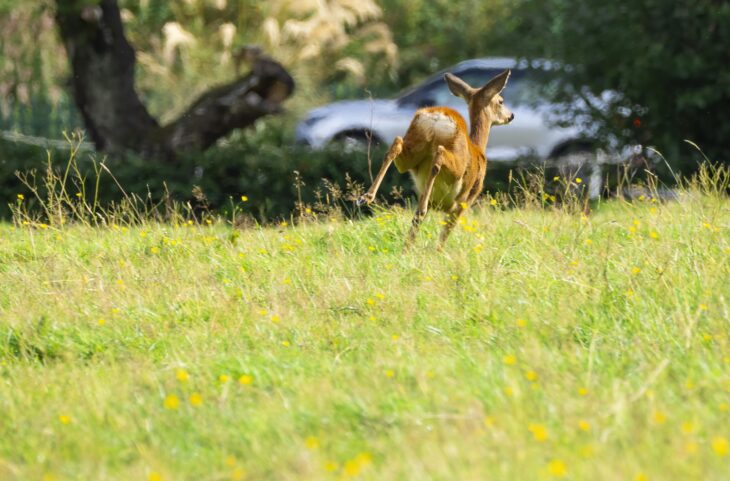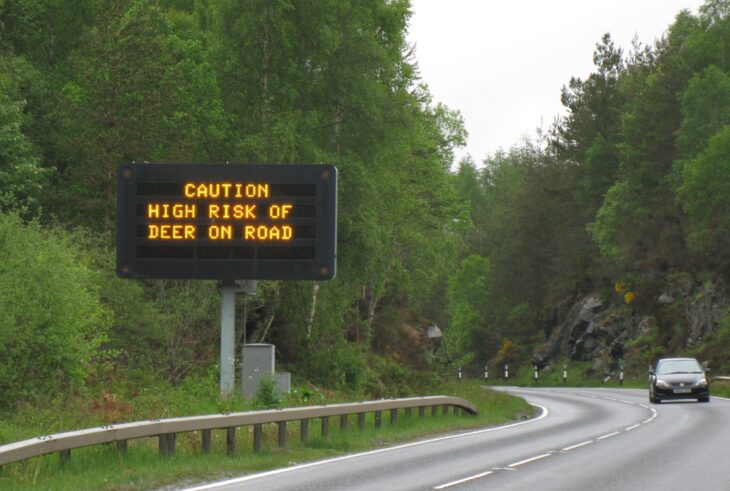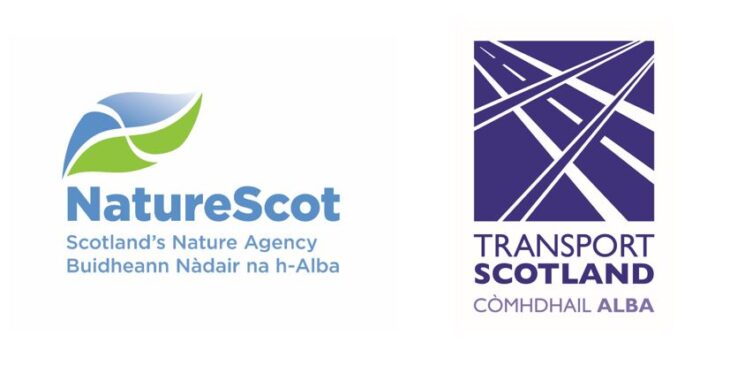About us
Deer Vehicle Collision project
The Deer Vehicle Collision project

The Deer Vehicle Collision (DVC) project is a joint initiative between NatureScot and Transport Scotland, and it has been running for many years. The project gathers information on incidences of deer vehicle collisions, predominantly for the trunk road network, and analyses the data to look for patterns and to see whether there are areas where the likelihood of a collision may be greater than other areas.
The raw data is gathered by several sources and then collated and analysed by an external contractor. Most data is supplied by the Trunk Road Operating Companies, which gather it as part of their contractual arrangements with Transport Scotland. Other key sources of biodiversity data include records from the Mammal Society, the Scottish Society for the Prevention of Cruelty to Animals, and Forestry and Land Scotland. While not all deer vehicle collisions get recorded and the data collated needs to be carefully scrutinised, there is now a substantial and growing database of DVC records. This database is updated regularly, maintained by the contractor and is publicly available for use in GIS.
The DVC project has produced a two-page document to summarise the findings from analysis of the 2008 to 2021 data. A full report details the work carried out between 2019 and 2021.
Based on the analysis work, the DVC project also runs media ‘campaigns’ to help raise awareness of the increased risk of DVCs at dawn and dusk in spring and, to a lesser extent autumn, in order to try and reduce the incidence of deer vehicle collisions. Their spring 2024 ‘Deer Aware’ campaign reflected the increased likelihood of roe deer on the road, whilst the forthcoming autumn campaign will focus on red deer.

“We know from recent analysis of deer vehicle collisions on our trunk road network that many high-risk areas are around road junctions and major interchanges, predominantly in the central belt. Our spring campaigns in particular remind drivers in these areas to be alert and slow down to help reduce the likelihood of collisions. We’re also continuing to explore what more can be done to mitigate the risk of collisions.” – Deer Vehicle Collision project
In addition to the collection, collation and analyses of data relating to incidences of DVCs, NatureScot and Transport Scotland commissioned related work looking at possible mitigation measures. They have now extended this work to investigate suitable mitigation measures at three of the higher risk trunk road locations identified through the analysis of the data on DVC locations. This will help identify options for possible mitigation measures at these and other similar locations on the Scottish road network. Important parts of this work involve the use of thermal imaging to investigate deer numbers and distribution in the proximity of the roads, and speaking to local land managers about their deer management plans.
This biodiversity data story was shared by NatureScot with the Better Biodiversity Data project, led and managed by the NBN Trust and supported by NatureScot and The Scottish Government.

